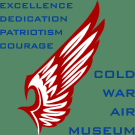 Beginning on 6/25/1950, the area of battle changed rapidly during the first year. Hostilities continued for two more years until 7/27/1953 when an armistice was signed.
Beginning on 6/25/1950, the area of battle changed rapidly during the first year. Hostilities continued for two more years until 7/27/1953 when an armistice was signed.Playing a pivotal role in the development of aerial warfare, Jet v Jet moved the air battlefield toward the modern high-tech environment. It was also the end of the era of the "Ace". While allied forces recognized 40 Aces in the Korean Conflict only two were recognized from the Vietnam conflict and none since.
While North and South Korea were at "War", foreign forces deployed in support of South Korea were operating under a United Nations resolution as a "Peacekeeping Force". For this reason, the action is most often described as a "Conflict" or "Police Action" in American literature.
No permanent peace has ever been established between the two countries and recently, on 5/27/2009, North Korea announced that it was unilaterally withdrawing from the armistice that suspended (not ended) hostilities in 1953.
 In the early months of the conflict, Lockheed P-80 "Shooting Stars" and Republic F-84 "Thunderjets" were rushed in, supplementing P-51's and F-82's then based in Korea and Japan.
In the early months of the conflict, Lockheed P-80 "Shooting Stars" and Republic F-84 "Thunderjets" were rushed in, supplementing P-51's and F-82's then based in Korea and Japan.The jets achieved air superiority over the battlefield, but the conflict continued to escalate.
 North Korea and China quickly responded. Introducing the Mig-15 into the battle, this greatly expanded the speed and altitude envelope of air battles and changed the balance of local air power.
North Korea and China quickly responded. Introducing the Mig-15 into the battle, this greatly expanded the speed and altitude envelope of air battles and changed the balance of local air power.This Mig-15 with Us Air Force markings, was flown to the South by a defector and used by our Air Force to determine the performance of the aircraft they were fighting.
 Responding in kind, the US rushed the newly developed North American F-86 "Sabre" jet to Korea.
Responding in kind, the US rushed the newly developed North American F-86 "Sabre" jet to Korea.Drawing on the experience and reserves of WW2, the US eventually fielded superior pilots, aircraft and tactics, achieving a 15-1 kill ratio over the North Korean/Chinese/Soviet aircrews and aircraft they were fighting.
 Most of the fighter engagements occurred in the vicinity of the Yalu River. North Korean air power was based in a "Safe Haven" north of the river. Flying south to engage their targets, then fleeing north across the Yalu, allied forces could not pursue or attack their bases because of the "rules of engagement" established by the United Nations Peacekeeping Force.
Most of the fighter engagements occurred in the vicinity of the Yalu River. North Korean air power was based in a "Safe Haven" north of the river. Flying south to engage their targets, then fleeing north across the Yalu, allied forces could not pursue or attack their bases because of the "rules of engagement" established by the United Nations Peacekeeping Force.



This comment has been removed by the author.
ReplyDeleteLoved your blog page!!!The stuff that you have remarked up here is superbly wonderful and I vigorously thank you for the same... car insurance cheap
ReplyDelete